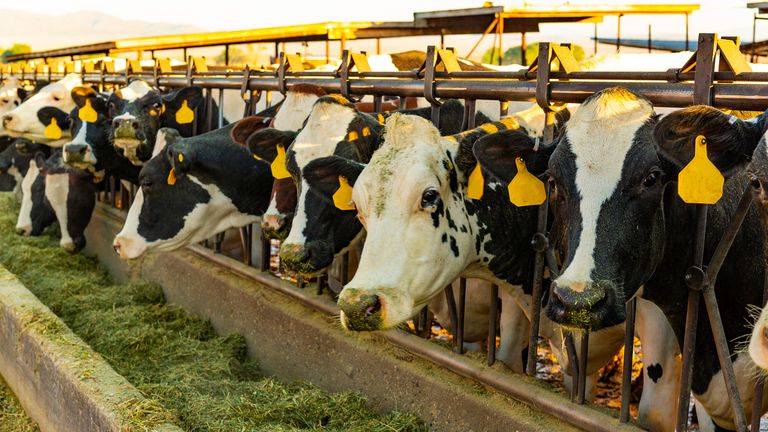The cow flu virus that has spread through US dairy herds may have taken a “dangerous” step towards being able to infect humans through respiratory infections, scientists have warned.
The H5N1 virus, more commonly found in birds, has so far been confirmed in cattle on more than 100 farms in 12 states, with inactivated fragments of the strain being found in pasteurised milk on supermarket shelves.
Four people working with animals have so far been infected, though symptoms were mild and they did not pass the virus on to anyone else.
Now detailed analysis by scientists at the University of Wisconsin-Madison in the US shows viral samples taken from cows were able to attach to receptors found on cells in the human respiratory tract.
The version of H5N1 found in birds is unable to do that, suggesting the bovine virus has mutated.
Further tests on ferrets, which are commonly used in flu research, found the cow virus could not spread easily by breathing.
However, Dr Ed Hutchinson, from the Medical Research Council and University of Glasgow Centre for Virus Research, said there were still “reasons to be concerned”.
‘Urgent’ action needed
“When they compared their cow flu isolate to bird flu they found that it had already begun to gain some of the properties that would be associated with the ability to spread effectively through respiratory infections in humans,” Dr Hutchinson, who was not involved in the study, said.
“To be clear, it does not appear to be doing this yet, and none of the four human cases so far reported have shown signs of onward transmission.
“However, this new H5N1 influenza virus would be even harder to control, and even more dangerous to humans, if it gained the ability for effective respiratory spread.
“Although it is good news that cow flu cannot yet do this, these findings reinforce the need for urgent and determined action to closely monitor this outbreak and to try and bring it under control as soon as possible.”
Unlike normal human flu, which is contained within the respiratory tract, H5N1 is able to spread to other organs in the body, with as-yet unknown effects.
The US government recently gave COVID vaccine manufacturer Moderna £139m to develop an H5N1 jab.
The company’s mRNA technology can be easily tweaked to match evolving viruses and then rapidly rolled out if there is an outbreak in humans.
The World Health Organisation says the current risk to people is low.
But scientists were astonished by the sudden appearance of the virus in cattle, a species not previously recognised as at risk, adding to fears that it could in future cause a human pandemic.
The research is published in the scientific journal Nature.

